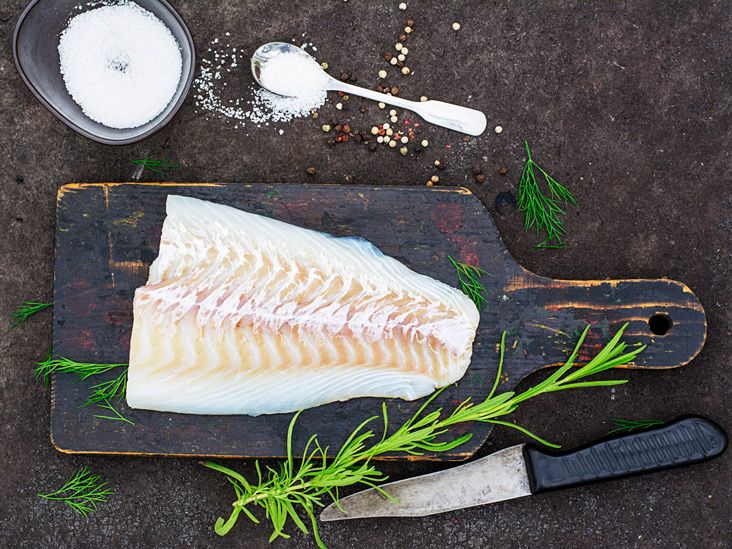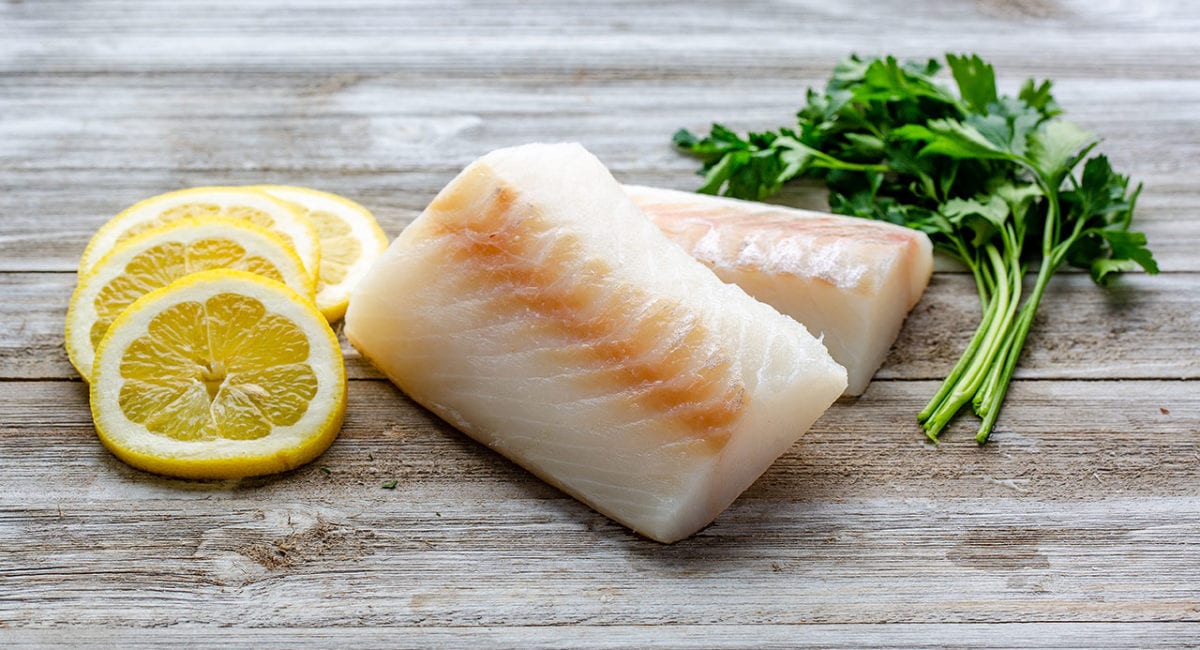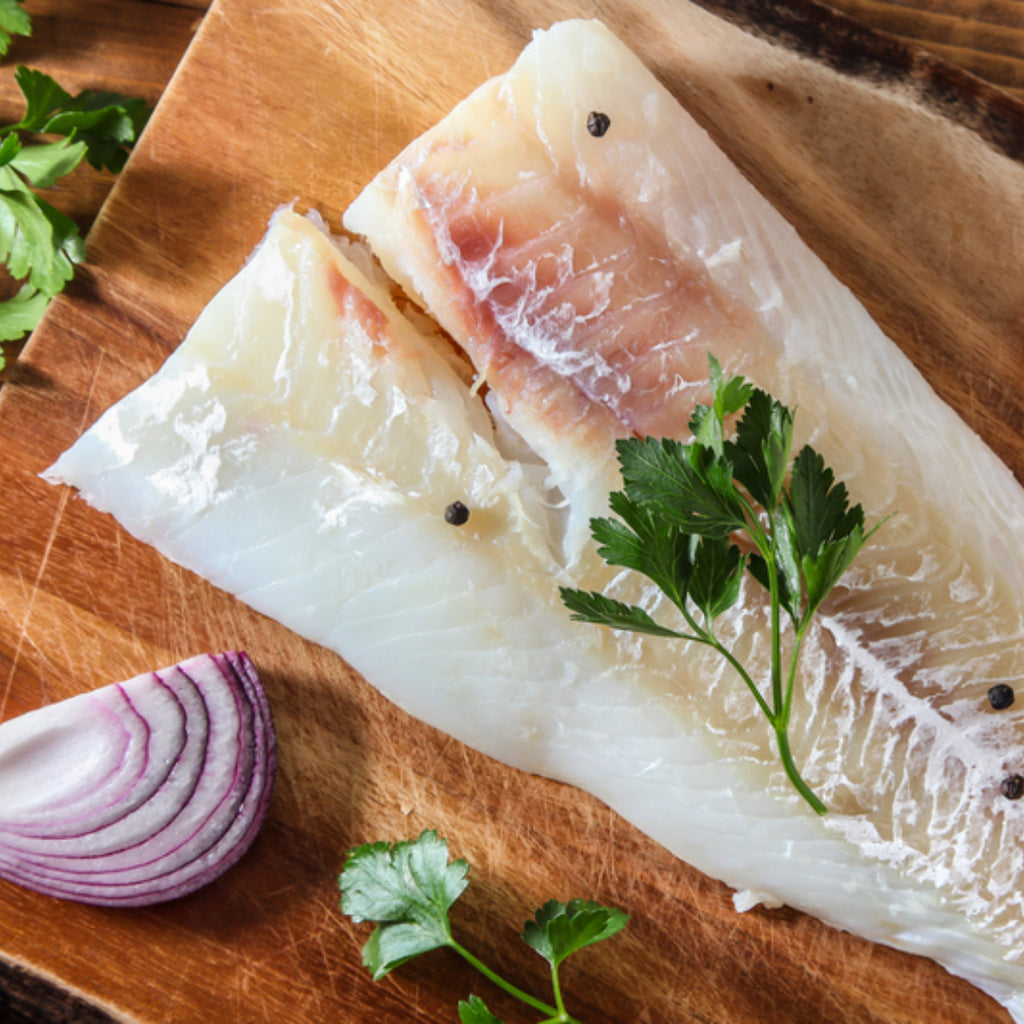Preparing cod to perfection is an art form that requires attention to detail. From testing its readiness to serving it with complementary sides, mastering the cooking process is key.
However, when it comes to consuming cod, some may wonder that can you eat cod raw?
Let’s delve into the nuances of cod preparation to understand the best practices and ensure a delicious dining experience.
What Is Cod Fish?
Cod is a popular seafood prized for its mild flavor and flaky texture. This saltwater fish lives in the Atlantic Ocean, particularly off the coast of New England. For centuries, cod has been a dietary staple for many cultures around the world.
Cod’s versatility makes it a favorite in kitchens everywhere. Available fresh or frozen year-round, cod can be prepared in countless ways. Due to its low-fat content, cod can dry out during cooking. To prevent this, try cooking cod with added liquids or healthy fats.
Characteristics and Uses of Cod
Cod’s popularity stems from its mild flavor and delicate texture. Primarily found in the Atlantic Ocean, cod has also been a historic food source. Cod’s low-fat content makes it a healthy choice, and its white flesh readily absorbs flavors. This versatility allows cod to star in both simple and complex dishes.
Culinary Delights with Cod
Cod’s culinary applications are extensive. Because of its mild flavor and delicate texture, cod works well in many dishes. Cod can be baked, pan-fried, steamed, or poached to create delicious meals. Popular recipes featuring cod include fish cakes, croquettes, gratins, mousses, and fish pies. Chefs worldwide have created countless cod recipes, highlighting its versatility and ability to absorb flavors. Whether you enjoy simple preparations or bolder seasonings, cod can be adapted to your preferences.
Health Risks Of Consuming Raw Cod

Certain health risks must be considered when eating raw cod. Raw fish, including cod, can harbor harmful bacteria and parasites that cause foodborne illness. Common culprits include bacteria like Salmonella and Vibrio, along with parasites like Anisakis. These pathogens can survive if cod isn’t cooked to a safe internal temperature, potentially causing infections or infestations in humans. Understanding these risks and taking precautions is crucial for safe cod consumption.
Potential Dangers of Eating Raw Cod
As mentioned earlier, raw cod can expose you to health risks. Similar to other raw fish, cod may contain bacteria and parasites that lead to foodborne illness. Common culprits include Salmonella, Vibrio bacteria, and Anisakis parasites. If cod isn’t cooked to a safe internal temperature, these pathogens can survive and cause infections or infestations. Being aware of these risks and taking precautions is essential for enjoying cod safely.
Safety Tips and Precautions for Consuming Cod
To minimize the risk of foodborne illness when consuming cod, follow these safety tips:
- Buy fresh, high-quality cod: Get your cod from reputable sources.
- Store cod properly: Keep cod in the refrigerator below 40°F (4°C).
- Cook thoroughly: Ensure cod reaches an internal temperature of 145°F (63°C) to kill harmful bacteria and parasites.
- Prevent cross-contamination: Keep raw cod separate from other foods and use separate utensils for handling.
- Wash hands: Wash your hands thoroughly before and after handling raw cod.
- Freezing for sushi or ceviche: To kill potential parasites, use properly frozen cod for at least seven days when preparing sushi or ceviche.
By following these safety measures, you can enjoy delicious cooked cod with peace of mind.
Cooking Cod: Delicious Methods for a Versatile Fish

Cod is a favorite for home cooks because it’s so versatile. You can prepare it in several ways, each resulting in a different taste and texture. Here are some popular methods to explore:
- Baking: This is a simple and reliable method that yields moist and flaky fish. Just pop the cod in the oven and let it cook to perfection.
- Pan-Searing: This technique creates a beautiful contrast: a crispy golden crust on the outside and tender, flavorful flesh on the inside.
- Steaming: This gentle method preserves the cod’s delicate texture and natural sweetness. It’s also a healthy option, as it requires minimal fat.
- Poaching: Poaching cod in flavorful liquids keeps it moist and infuses it with delicious savory notes.
These methods offer various ways to enjoy cod. Choose the one that best suits your dish and preferences.
Benefits Of Eating Cooked Cod

Cooked cod is a nutritional powerhouse with a variety of health benefits. Let’s explore why this delicious fish should be part of your diet.
- Lean and Mean Protein Machine: Cod is an excellent source of high-quality protein, essential for building and repairing muscles. This makes it a great choice for athletes and anyone looking to maintain a healthy physique.
- Weight Management Ally: Because cod is low in calories and fat, it’s a perfect ally for those watching their weight. You can enjoy delicious cod dishes without worrying about tipping the scales.
- Heart-Healthy Fats: Cooked cod boasts omega-3 fatty acids, which are well-known for promoting heart health. These fats can help reduce inflammation throughout your body.
- Vitamin and Mineral Powerhouse: Cod is packed with essential vitamins and minerals like vitamin B12, selenium, and phosphorus. Vitamin B12 is crucial for nervous system function, while selenium supports your thyroid and immune system. Phosphorus is vital for strong bones and teeth.
Including cooked cod in your diet contributes to your overall well-being. It provides essential nutrients for your body to function optimally and supports a healthy lifestyle.
Raw Cod Consumption: Safety First

Enjoying cod safely comes down to proper handling and cooking. While raw cod can be tempting, it may harbor bacteria or parasites that can lead to foodborne illness.
To eliminate these risks, cook cod thoroughly to an internal temperature of 145°F (63°C). This ensures safe consumption and lets you enjoy the delicious flavors of cooked cod.
Safe consumption goes beyond cooking. Here’s how to handle cod for safe raw consumption (though cooking is generally recommended):
- Source matters: Buy cod from a reputable seller known for freshness.
- Keep it chilled: Store cod in the refrigerator or on ice until use.
- Cleanliness is key: Sanitize all utensils and surfaces used for handling the fish.
- Bone removal: Remove any bones or scales before consuming.
- Freeze for safety (optional): If unsure about freshness, consider freezing the cod first. This kills potential parasites.
Remember, these precautions aim to minimize risks, but cooking remains the safest way to enjoy cod.
Conclusion
Cod is a delicious and versatile fish, but it’s important to be mindful of safety when consuming it raw. Raw cod can harbor bacteria and parasites that can cause illness.
Cod offers a variety of cooking methods, each creating unique flavors and textures:
- Baking: This method locks in moisture and results in tender cod.
- Grilling: Grilling infuses a smoky flavor while keeping the cod juicy.
- Pan-frying: Pan-frying creates a crispy exterior with a delicate interior.
- Poaching: Poaching is a gentle method that yields moist and flaky cod.
No matter your preference, there’s a cooking method for cod that will tantalize your taste buds.
References:
FAQ About Can You Eat Cod Raw: Understanding Cod Preparation
Q: Is it safe to eat cod raw?
A: It is not recommended to eat cod raw due to the risk of parasitic infections. Cod should be cooked thoroughly to ensure it is safe to consume.
Q: What are the popular ways to prepare cod for eating?
A: Popular methods to prepare cod include baking, grilling, broiling, frying, and poaching. Each technique can bring out different flavors in the fish.
Q: How can one tell if cod is cooked properly?
A: Cod is considered cooked properly when it reaches an internal temperature of 145°F (63°C), and the flesh turns opaque and flakes easily with a fork.
Q: Are there any health benefits to eating cooked cod?
A: Yes, cod is a good source of lean protein, vitamins, and minerals, including omega-3 fatty acids, which are beneficial for heart health.
Q: What are some common dishes that feature cooked cod?
A: Some popular dishes that feature cooked cod include fish and chips, fish tacos, cod au gratin, cod cakes, and baked cod with herbs.

Welcome to Braddock Bay Tavern & Grill, where history, delicious cuisine, and stunning views come together to create an unforgettable experience. Our restaurant, situated on the picturesque edge of Lake Ontario, has a rich history that adds a unique charm to your dining experience. The roots of our establishment can be traced back to 1865, when it was first constructed as an icehouse. Over the years, it transformed into the historic Braddock Bay Hotel, becoming a beloved local landmark. Today, we take pride in preserving the building’s historical beauty, ensuring that every visit to our restaurant is a journey through time.